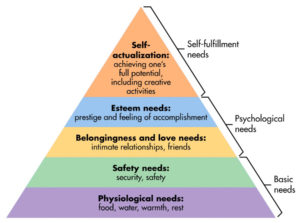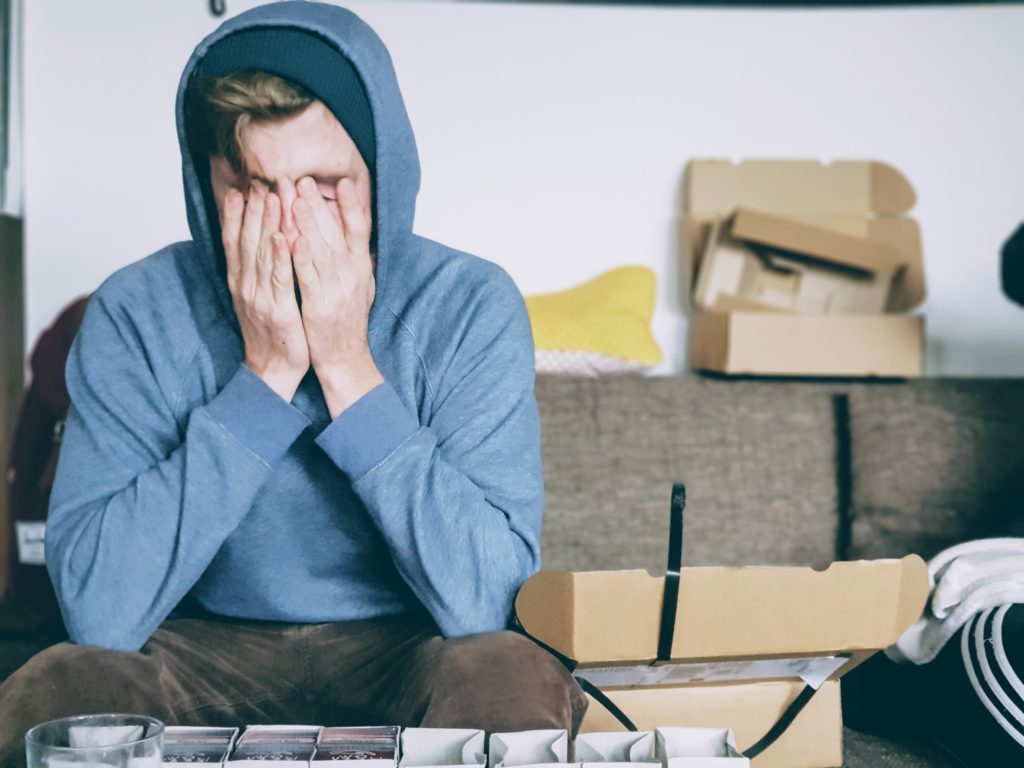Are You Coping?
How stress affects the lives of U-M students
—By Rajan Varma
“Nothing is worse than that first mental breakdown away from home” – Unnamed Student
After three years at the University of Michigan, I have not met a single person, besides the beloved student-athlete, who claims to be as physically healthy as they were in high school. Former athletes now have beer guts, the anxious Straight-A students are now chain-smokers and vape-addicts, and the stoners who used to hang around the bleachers now make their former selves look tame. There is even a term dubbed for this unhealthiness, “The Freshman 15,” referring to the fifteen pounds every freshman seems to gain during their first year of college. In essence, it seems like we are not as healthy as we used to be. What happened to us that led to such degradation of our health and self-care?
A primary reason for this phenomenon is the tumultuous transition from high school to college. For many of us, college is the first time we’re given the responsibility of unsupervised self-regulation. Our parents and guardians are not here to catch us if we fall. And we do fall. As college students, we’re suddenly cast into an environment where alcohol, illicit drug use, and sex all seem to flow freely. What are we supposed to prioritize? Our obligations to perform well, or our newfound freedoms?
The general rule of thumb in college is that the most enviable people are those who can do both: get good grades and know how to party hard. Veronica, a senior graduating with a 4.0 GPA and a reputation for regularly throwing wild parties, says, “I don’t like resting. It’s a waste of time. I need to be somehow doing something or I get anxious.” We are impressed with Veronica; we admire her—she had fun and got good grades! In lauding her, we are rewarding a personal disregard for her own mental health. By envying her, we are perpetuating the notion that a person is worth as much as their achievements.
A Problem, Compounded
Jack, a senior at the University of Michigan, says: “I haven’t done anything in college that I hadn’t already done in high school […] outside of the fact that during my freshman year, I had alcohol poisoning…twice.” Others have had comparable missteps; one of my roommates failed two classes during his freshman Fall term and proceeded to experience what he labels the hardest time of his life: “Even after so much effort, I felt like a failure and highly considered dropping out. School became my only focus. School had to be my only focus.” Both are former varsity athletes, yet neither now have the energy to comfortably get through the typical day.
As college students, we’re encouraged to burn our candles until their snuffing points; we’re expected to live in this constant state of stress, all the while sustaining it with a never-ending workload. But what many don’t realize is that living in a constant state of stress leads to anxiety buildup. So, in effort to release from whatever new stressor we are dealing with, we let loose in a new environment. We cope with wild parties and alcohol abuse. But, is it healthy that this is normal, and what is the University doing to address it?
University Intervention and its Effectiveness
Well, to begin with: these coping mechanisms are not healthy and can lead to a multitude of health issues. The University has enacted measures to limit the majority of Wolverines from experiencing the aforementioned; mandatory orientation seminars have been designed to facilitate students’ transition from cradle to hard ground, and some specifically cater to managing stress and addressing substance abuse. Each seminar is spearheaded by a faculty speaker, after which students are required to complete a short but extensive course that educates on the daily risks of our “unsupervised self-regulation.” All that being said, the consensus is that it’s ineffective, as expressed by a group of intoxicated freshman roaming The Diag during this year’s Hash Bash: “The seminars made me more educated, but when everyone’s weekends revolve around what happens on Saturday night, no one seems to care, or they just forget. That [message] isn’t fun.”
Stress and college go hand in hand; ask any college student otherwise and there’s a good chance they will laugh. However, there is a line between “good” stress and “bad” stress. Stanford Neurobiologist Robert Sapolsky claims that good stress comes from short-lived things that are under your control; things where you know you will be okay on the other side. The bad type is where the stressors have no end in sight, with potential disastrous consequences. In other words: stress regarding a pimple is not the same as stress regarding failing a class, which is not the same as potentially being homeless. And most of these “bad” stressors seem to introduce themselves in college: Where am I going to get a job? Where is my life going? What will happen to me if I don’t do well?
All Stress is Not Created Equal
It makes sense that things which threaten more fundamental categories of your life will affect you more deeply. As formulated by the 20th-century psychologist Abraham Maslow in his well-known “Hierarchy of Needs,” one cannot achieve self-fulfillment or live up to one’s full potential if more basic needs are not met.

For many of us, the ability to satisfy those basic needs is highly linked to the presence, or lack thereof, of personal capital. In simple terms: if you are rich and you mess up, you still have your money to rely on. But if you don’t, then all of a sudden, your most basic needs suddenly become threatened. A study performed by the Association of Psychological Science confirms this deduction, showing that being poor and the occurrence of mental disorders are positively correlated. The stress of instability degrades a person’s ability to function. This implies that a lower socioeconomic class student has an almost innate disadvantage in their ability to perform well. An unnamed recent graduate recently revealed to me the hardship they faced their senior year: “I had no job, two hundred thousand dollars in debt and my lease was expiring in six weeks. [It was] a psychologically damaging experience, to say the least.” Another found an unpaid internship and moved into their parents’ Manhattan condo.
From this it is clear that socio-economic status heavily affects stress levels. For the students interviewed for this article, money either wasn’t a stressor at all, or in their top three. This highlights how lack of money affects the lower socio-economic class, but how does the surplus of money affect the higher socio-economic classes? It provides them access to psychologists, tutors, personal trainers, cooks, vacation trips, and more. They have better resources to dissolve their stress. To give an example: I recently went to Punta Cana for spring break, whereas one of my friends couldn’t afford to even go home, so he stayed in the dorms.
What is the University doing about this disparity, and is this even their responsibility? Isn’t financial aid supposed to address this? Jack explains, “My financial aid allocates five hundred dollars to rent. My rent is seven hundred and fifty dollars and then there’s food, and hopefully some fun. I also had a rash last week which ended up costing three hundred dollars to fix after insurance. I work at the library to cover the difference, but I don’t end up going out with my friends that often.” For Jack, college often poses the same problem as an unpaid internship: it assumes that people can afford to not make money. The tuition and pocket change for accommodations, while it provides a lot, is not nearly enough–especially taking into account the necessity for emergency funds, such as needing a rash taken care of.
For students who are struggling and experiencing distress, the University’s center for Counseling and Psychological Services (CAPS) is in place. However, after trying to make an appointment myself, I found that nobody could see me for a month, unless I declared an emergency (my safety and/or the safety of others is at risk). When I asked a spokesperson why, she cited popular demand for their services. What this implies is that the CAPS department doesn’t have access to enough on-call psychologists. For most students this provides them with two extremes: don’t receive help for a while, or declare yourself mentally unfit and open up a Pandora’s box of potential consequences. Anay, a graduate from the class of 2018, describes his experience with CAPS as poor to say the least, “There’s a long response time, little resource allocation, and little focus on a sustainable solution [to my problem] before they trotted me off.”
This poses a serious problem. Students are an especially vulnerable demographic, as shown above. One in five of us begin college with a mental disorder, and suicide is the second leading cause of death in people aged 25 and younger in the US. We are trying to learn how to deal with our problems on our own, ideally in a healthy manner. It is the responsibility of the University to ensure that we have a safe environment to do so, part of which involves quick access to mental healthcare officials who aren’t overburdened. However, if the University of Michigan doesn’t provide some semblance of guardianship for its students, then more of us will begin to fall through the cracks, if not already. Take the Claremont McKenna College in California. This year, the school with a student population of approximately 1300 students had two students kill themselves within a week. This happened in the midst of a month-long backlog at the mental health facilities, according to Elliot Polk, a friend of mine, who is an attending senior.
What can we do from here?
We have a hazardous culture as a result of increasing levels of stress and not much help provided by the University. To be fair however, the University doesn’t exist in a bubble. Competition for acceptance, whether it be grad-school or a job, is at an all-time high, and rising stress levels comes hand-in-hand with it. The University itself only really has two options: 1) actively reduce the stressors that they create, or 2) make sure to provide copious resources to anyone who is struggling with said stressors. To address the cause of the disease, or to address the symptoms. Both have their hurdles: the former is much more complex. Potential solutions could involve providing better financial aid to struggling students, but that requires more funding. The Go Blue Guarantee, a financial aid initiative started at the University, is a step in that direction, providing free tuition to any Michiganders who are accepted and make less than 60k annually. However, it has a specialized focus: in-state students compose a little over half of the student population, leaving the other ~half behind.
The University could also consider means to reduce student stress without affecting academic rigor. Some other universities have taken action, such as UCLA, whose administration placed “nap pods” around their campus to help alleviate stress. However, solely addressing the symptoms of our mental health epidemic, ultimately is putting a placeholder on the problem. The actual solution is somewhere in the middle, and it has to come fast.
As I sit in the library, finishing up the final words on this article, I look around. I see stacks of empty coffee cups and eyes fighting to stay awake. I see people biting their fingernails and popping Adderall. I see recklessness masked as determination. I see our coping mechanisms slowly become our defining traits. What this says about our future, I do not know.
*Some names and identifying details have been changed to protect the privacy of individuals.*
Feature photo by Christian Erfurt on Unsplash

